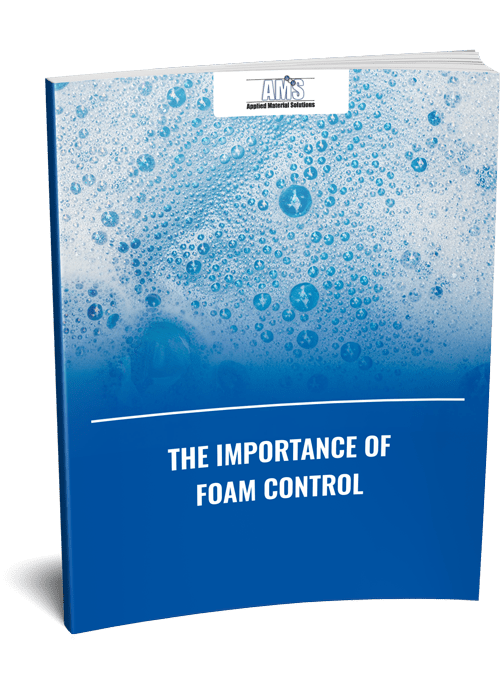Best Practices for Picking the Right Anti-Foam Control Service for Your Demands
Choosing an efficient anti-foam control solution requires a detailed analysis of your one-of-a-kind operational requirements. Secret considerations include the certain properties of your process, such as temperature level, chemical, and ph interactions, all of which considerably influence the performance of defoaming representatives.
Understand Your Foam Trouble
Often, organizations experience foam-related concerns that can prevent functional effectiveness and product quality. Foam development can happen during various procedures, including mixing, fermenting, and transport, and it often leads to tools ineffectiveness, production downtime, and increased functional expenses. Understanding the underlying reasons for foam generation is essential for addressing the problem effectively.
Foam can emerge from a number of factors, such as the nature of the products involved, frustration levels, temperature level variants, and chemical reactions. As an example, particular surfactants can worsen lathering, while high shear mixing can present air, resulting in unwanted foam accumulation. Additionally, ecological conditions and the certain characteristics of the fluid systems in operation can significantly influence foam behavior.
Identifying the kind of foam-- whether it is steady or unpredictable-- is also important. Secure foam often tends to persist longer and is much more challenging to manage, while unsteady foam may dissipate more easily. Anti-Foam Control Solutions. By evaluating these variables, companies can acquire insights right into their foam issues, enabling them to develop targeted strategies to reduce foam formation and enhance total process performance. This foundational understanding is important for picking a suitable anti-foam control remedy customized to certain operational requirements.
Evaluate Anti-Foam Options
When thinking about anti-foam options, it is necessary to extensively examine the numerous formulas offered on the marketplace to discover the most ideal remedy for your details foam-related obstacles. Anti-foam representatives can be found in varied types, including silicone-based, non-silicone, and natural solutions, each offering unique properties and performance qualities.
Begin by assessing the specific application needs, such as temperature level thresholds, pH levels, and the sort of foam being produced. For example, silicone-based agents are recognized for their efficiency in high-temperature atmospheres, while non-silicone choices may be preferable in food handling applications as a result of governing factors to consider.
It is likewise essential to consider the price of application and the desired long life of the foam control. Some formulas may provide prompt defoaming action, while others supply prolonged security. Carrying out small tests can give insights right into the effectiveness of each option in real-world problems.
Consider Application Compatibility
In the realm of anti-foam services, guaranteeing application compatibility is critical for achieving optimal efficiency. The performance of an anti-foam representative mostly depends on its ability to operate sympathetically within the certain specifications of your application, including temperature level, pH, and the existence of other chemicals. Different solutions may do variably across diverse problems, Visit This Link therefore extensive testing is crucial.
Begin by determining the qualities of your process, such as thickness and the nature of the medium in which the anti-foam will certainly be utilized. Some anti-foam representatives may function well in aqueous services however stop working in organic solvents. Furthermore, consider the possible interactions with existing products and components to stay clear of undesirable results.
It is likewise vital to assess the approach of application. Whether the anti-foam is introduced continually or batch-wise can influence its efficiency and longevity in the system. Guarantee that the picked product is look here not only compatible with the functional parameters however additionally lines up with any kind of regulatory demands pertinent to your market.
Assess Environmental Influence
How does the environmental impact of an anti-foam control option affect your overall choice procedure? The eco-friendly footprint of your selected anti-foam representative is paramount, as it reflects your commitment to sustainability Home Page and governing conformity. Picking a product with very little ecological effects can enhance your corporate picture and foster client trust fund.
When analyzing environmental impact, consider the biodegradability of the anti-foam solution. Solutions with high toxicity can posture substantial threats to regional environments, potentially resulting in regulatory penalties and ecological destruction.
Another crucial aspect is the existence of dangerous substances. Anti-foams having hazardous chemicals might demand unique handling and disposal measures, making complex and boosting operational prices conformity with environmental regulations. Selecting green options can mitigate these threats.
Screen and Maximize Performance
To take full advantage of the effectiveness of your anti-foam control option, it is necessary to frequently monitor and maximize its performance. Constant evaluation enables the identification of any type of deviations in foam levels and the succeeding effectiveness of the anti-foam agent.
Apply an organized method to check essential efficiency indicators (KPIs), such as foam volume, security, and the response time of the anti-foam agent. Make use of analytical tools and strategies, such as aesthetic examinations, foam height measurements, and specialized sensors, to gather exact information.

Furthermore, maintain open interaction with suppliers for technological support and insights on the latest improvements in anti-foam technology. This aggressive approach not just help in accomplishing optimum performance however also decreases operational interruptions and boosts overall procedure performance. On a regular basis revisiting and fine-tuning your anti-foam approach ensures that you are successfully taking care of foam-related challenges, eventually bring about improved efficiency and expense financial savings.

Verdict
In conclusion, choosing the ideal anti-foam control solution requires a thorough evaluation of particular application requirements, consisting of temperature, pH levels, and chemical compatibility. Adhering to these finest techniques will certainly facilitate educated decision-making in anti-foam control options.
Picking an effective anti-foam control service requires a thorough analysis of your unique operational demands.In the realm of anti-foam options, making sure application compatibility is vital for attaining optimum efficiency.Just how does the ecological influence of an anti-foam control option affect your general choice procedure?In final thought, choosing the proper anti-foam control option requires a detailed examination of certain application requirements, including temperature, pH levels, and chemical compatibility (Anti-Foam Control Solutions). Adhering to these ideal practices will facilitate informed decision-making in anti-foam control solutions